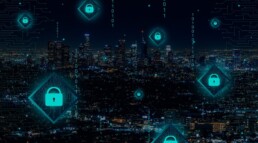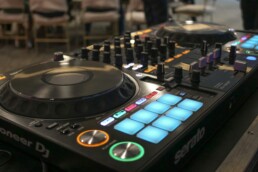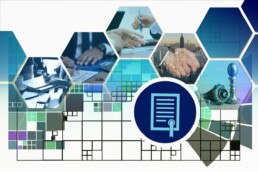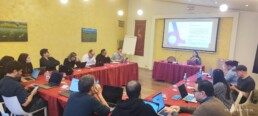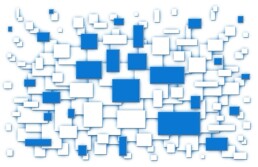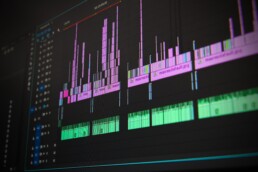What is a network?
In the context of cryptocurrencies and NFTs, a network refers to the interconnected system of nodes that collectively operate and maintain the blockchain. This network ensures the integrity, security, and functionality of the cryptocurrency. Within a network you can find several components and functions that is interesting to know about, such as:
- Nodes: These are individual computers that participate in the network. Nodes can be full nodes, which store a complete copy of the blockchain, or lightweight nodes, which store only parts of the blockchain necessary for transactions.
- Blockchain: This is the distributed ledger that records all transactions made with the cryptocurrency. The blockchain is maintained and updated by the network of nodes.
- Miners/Validators: In networks that use Proof of Work (PoW), miners solve complex mathematical problems to add new blocks to the blockchain. In Proof of Stake (PoS) systems, validators are chosen based on the number of tokens they hold and are willing to "stake" as collateral.
- Consensus Mechanism: This is the protocol that nodes follow to agree on the state of the blockchain. Common consensus mechanisms include Proof of Work (PoW) and Proof of Stake (PoS). These mechanisms ensure that all nodes agree on the validity of transactions and the order in which they are added to the blockchain.
- Cryptographic Algorithms: These algorithms secure transactions and control the creation of new units of the cryptocurrency. Public and private key pairs are used to ensure that only the owner of a cryptocurrency can spend it.
- P2P Network (Peer-to-Peer Network): This is the decentralized architecture where nodes communicate and share information directly with each other, rather than through a centralized server. This structure helps to ensure the robustness and security of the network.
- Smart Contracts: In some networks, like Ethereum, smart contracts are self-executing contracts with the terms directly written into code. These contracts automatically execute and enforce the terms of an agreement based on predefined rules.
- Transactions: These are the records of cryptocurrency exchanges between participants in the network. Transactions are verified by nodes and added to the blockchain.
The network's decentralized nature ensures that no single entity has control over the entire system, making it resistant to censorship and fraud. Each component of the network works together to maintain the security, transparency, and functionality of the cryptocurrency and NFTs.
What's the importance of a smart contract in NFTs?
A few weeks ago we learnt what a smart contract was and the most popular uses of them. In this new post we will focus on how smart contract are used in the contexts of artistic creation and NFTs.
And this is because smart contracts play a crucial role in the creation, management, and transfer of Non-Fungible Tokens (NFTs).
1. Creation and Minting
- Definition of NFTs: Smart contracts define the properties of an NFT, such as its name, symbol, and unique attributes (metadata).
- Minting Process: When a new NFT is created, a smart contract mints (generates) the token on the blockchain. This process involves assigning a unique identifier to the NFT and recording it on the blockchain.
2. Ownership and Provenance
- Ownership Records: Smart contracts maintain a transparent and immutable record of ownership. Each time an NFT is transferred, the smart contract updates the ownership record on the blockchain.
- Provenance: The history of an NFT, including its creation and all subsequent transfers, is stored on the blockchain. This ensures the authenticity and provenance of the NFT, which is crucial for valuing digital art and collectibles.
3. Transfers and Sales
- Automated Transfers: Smart contracts handle the transfer of NFTs between parties. When a sale is completed, the smart contract automatically transfers ownership to the buyer and updates the blockchain.
- Marketplaces: NFT marketplaces use smart contracts to facilitate buying, selling, and auctioning NFTs. The contracts ensure that transactions are executed according to predefined rules without the need for intermediaries.
4. Royalties and Revenue Sharing
- Built-in Royalties: Creators can embed royalty terms into the smart contract of an NFT. Each time the NFT is resold, a percentage of the sale price is automatically transferred to the creator.
- Revenue Sharing: Smart contracts can also be programmed to distribute revenue among multiple stakeholders, ensuring that all parties involved in the creation of an NFT are fairly compensated.
5. Interoperability and Standards
- ERC-721 and ERC-1155 Standards: Most NFTs are created using standard smart contracts like ERC-721 and ERC-1155 on the Ethereum blockchain. These standards ensure interoperability, allowing NFTs to be easily transferred and traded across different platforms and marketplaces.
- ERC-721: Defines a single, unique token (non-fungible).
- ERC-1155: Allows for a combination of fungible and non-fungible tokens in a single contract, providing more flexibility.
6. Functionality and Interaction
- Programmable Utility: Smart contracts can endow NFTs with additional functionality, such as access to exclusive content, participation in games, or membership benefits.
- Interaction with dApps: NFTs can interact with decentralized applications (dApps) through smart contracts, enabling complex use cases like in-game assets, virtual real estate, and more.
7. Security and Trust
- Immutable Contracts: Once deployed, smart contracts cannot be altered. This immutability ensures that the terms of an NFT, including ownership and royalties, are secure and tamper-proof.
- Trustless Transactions: Smart contracts enable trustless transactions, meaning parties can engage in transactions without needing to trust each other or a central authority. The contract enforces the terms automatically.
In conclusion, smart contracts are fundamental to the functioning of NFTs, providing the underlying framework for creating, owning, transferring, and interacting with these unique digital assets. They ensure transparency, security, and automation in the NFT ecosystem.
IRCAM Forum celebrates an online webinar to explain how DAFNE+ platform works
The project continues to bring up opportunities for the community of users of the platform to grow. This was what happened with the online webinar celebrated by our partner IRCAM Forum last week. The online event gathered a group of artists and musicians interested in the possibilities of blockchain technology and DAFNE+ Platform.
The webinar was hosted by the artist and Product Manager of Ircam Forum, Greg Beller. He was the one to explain how the platform works and how the future users will be able to mint their contents using it. During the event the audience learnt how to create a wallet, how to resiter into DAFNE+ Platform and how to mint content.
As this technology is so new a lot of educational work needs to be done within communities of artists. This is also why the session was recorded, so that the attendants could access the webinar again.
Watch the session.
https://youtu.be/bJRAxT4mCj4
What is a Smart Contract?
One of the particularities of the NFT space is the use of smart contracts, even though that their use is not exclusive of this industry. Understanding the concept and their use can be very helpful for artists that want to create content and art inside the space.
So, in the context of cryptocurrencies and blockchain technology, a smart contract is a self-executing contract with the terms of the agreement directly written into code. These contracts automatically execute and enforce the terms of an agreement based on predefined rules and conditions, without the need for intermediaries.
Some of the key aspects of smart contracts are:
- Code-Based Agreements: The terms and conditions of a smart contract are written in programming code, which is then deployed onto a blockchain. This code contains the logic that dictates how the contract should function.
- Automation: Once the predefined conditions specified in the smart contract's code are met, the contract automatically executes the agreed-upon actions. This automation reduces the need for human intervention and minimizes the risk of errors.
- Trust and Transparency: Since smart contracts are deployed on a blockchain, they inherit the blockchain’s properties of transparency and immutability. All participants can see the contract’s code and its execution, ensuring trust and accountability.
- Decentralization: Smart contracts operate on decentralized blockchain networks, meaning they are not controlled by any single entity. This decentralization enhances security and reduces the risk of manipulation or censorship.
- Security: While smart contracts offer many advantages, they are also susceptible to bugs and vulnerabilities in their code. Ensuring the security of smart contracts through thorough testing and auditing is crucial to prevent exploits and attacks.
- Interoperability: Some blockchains are designed to work with other blockchains, allowing smart contracts to interact across different networks, thereby enhancing their functionality and reach.
In these sense, there are several use cases that can be found using smart contracts in a daily basis. The first clear example is a financial transaction. A smart contract can automate payments, loans, and other financial agreements. Another common use is token issuance or token distributions that often use smart contracts to precisely manage the issuance and distribution of new tokens. In this same line we can find that many blockchain-based applications, particularly on platforms like Ethereum, the use smart contracts is frecuent to handle their core functionalities. And last but not least, its is very useful in supply chain management. This is because smart contracts can track goods through a supply chain, automatically triggering actions like payments or transfers of ownership when certain conditions are met.
So, to conclude, smart contracts are a powerful tool within the blockchain ecosystem, enabling the creation of decentralized and automated agreements that are secure, transparent, and efficient.
Migration to Amoy testnet in DAFNE+ Platform due to the deprecation of Mumbai
Such things happen and, sometimes, a quick response is the better option. Due to the deprecation of Mumbai testnet from Polygon, DAFNE+ platform has been obliged to migrate to Amoy testnet network, to be able to continue to work. For this reason, from now on the platform will operate in this other network.
The technical reason for this is that Mumbai testnet for Polygon PoS uses Ethereum’s Goerli testnet as its root chain. This means Mumbai counts on Goerli for block production. But, since Goerli is currently scheduled for deprecation, by the end of the first quarter of 2024, this change needed to be made as Mumbai will cease to operate too.
Our technician partners have been working hard on this matter so that none of our current users have any problems with this issue. The NFTs that had been created up to this point in time will need to be migrated aswell.
As a matter of fact this is being done already and no major issues have come up to this point. This is why in DAFNE+ project we are confident that this matter will be resolved soon enough.
This means also that we will start working on a new platform tutorial to show our future users how to configurate their wallet onto Amoy Testnet. In the meantime if you have any inquiries you can contact us here.
DAFNE+ 5th Plenary Meeting in Palermo
The historic and beautiful Sicilian city of Palermo was home for the last General Meeting of DAFNE+. An interesting venue where the partners exchanged impressions on the recent developments of the project.
One of the first subjects addressed was the inputs of the reviewers of the project. Interesting insights that will be introduced and implemented within the following months.
The next stage of the project will face several challenges but the partners feel fit for the task.
In this sense, we also had a very interesting discussion around DAOs and how to accomplish it for DAFNE+. Another big issue that was analysed was how to collect and measure our users feedback and through what channels. We also talked about the platform and our next events in our agenda, like the one we have scheduled in March with IRCAM.
Interview with Iago Fernández-Cedrón, Project Manager of DAFNE+
https://youtu.be/swROcJAaCXU
DAFNE+ is indeed an innovative project that seeks to help creatives understand and dive into new technologies such as blockchain, Web 3 and NFTs. With this main purpose, the project looks to make content distribution fair.
In this interview, DAFNE+ project manager, Iago Fernández-Cedrón, from UPM, helps us understand the main objectives of this European research project. As he explains carefully, DAFNE+ is thought "to help and foster the efforts to monetize and make new business models for the creators in these industries".
DAFNE+ "brings the possibility to cocreate the NFTS and distribute the tokens and the royalties in a fair and transparent way for those users that want to work with us", he adds. Also he talks about the possibilities that new decentralized models of organization can bring to the creative space. "We empower those communities with the DAO that we are building to allow them to decide on how these new business models work on their creations", he confirms.
Watch the whole interview to know more about DAFNE+ Project.
Interview with Hugues Vinet, IRCAM explaining Use Case 2
https://youtu.be/BCXENN4DAUc
IRCAM is a French institution founded un 1977 by French composer, pedagogue and orchestra conductor Pierre Boulez. Its purpose was the research and study of acoustic and music.
"Boulez had a vision that the future of contemporary music would go through science and technology", says Hugues Vinet, from IRCAM, in this interview. "He had this idea of puting together on one side scientists, engineers, and in the other side musicians that would work together to renuew the musical expression", he adds.
Nowadays they have a lab where they produce technology and research in this innovative field. But this is not only for internal purposes but also for external users. That is why they founded IRCAM Forum, that has already 60.000 users worldwide.
At this point, IRCAM's researchers wanted to go further and planned to use "NFT and blockchain technology, using software and creation tools", Vinet explains, and is one of the reasons they are part of DAFNE+ project. In this interview Hugues Vinet gets to explain some of the aspects of this collaboration.
DAFNE+ Platform presented during the Creative Jam
After the platform's launch last month, DAFNE+ project needs to be tested by their potential users. Artists, musicians, designers, and many other content creators are called to use and test the platform and give feedback.
All of those potential users that will be interested in the platforms proposal to ensure a fair content creation and distribution.
One of the opportunities to do so has come up this week in the event called Creative Jam, co-organised by School of Digital Arts (MMU) and IAAC. Both are DAFNE+ partners and have strong artistic communities that could find the platfom useful.
During the hybrid event the DAFNE+ Platform was exhibited and our technical partners from Engineering and Synelixis, gave a thorough introduction and onboarding session to the attendants.
Interview with Olga Trevisan, IAAC explaining Use Case 3
https://youtu.be/lDWjJB-TTm8
In this interview, Olga Trevisan, from IAAC, explains how they are working to develop DAFNE+ project. "We are collaboraing with the maker and design community researching viable tools and methods that can benefit our communities in the digital landscape", says.
In this sense, the Distributed Design Platform (coordinated by IAAC) will be engaged - a distributed creative community of 1600+ novel content creators across making, art and design. Based on the global Fab Lab Network of 35,000+ users, the platform is undertaking research and development into creative alternatives to industrial processes. "Another aspect that the platform is developing is to assist content creator on various copyright agreements", she adds, in order to explain how this can be useful to artists and designers.
Artists and designers can take advantage of the tools provided on the DAFNE+ platform to create, distribute and buy original artistic content that can be used for emerging technologies, such as VR/AR applications and games.
